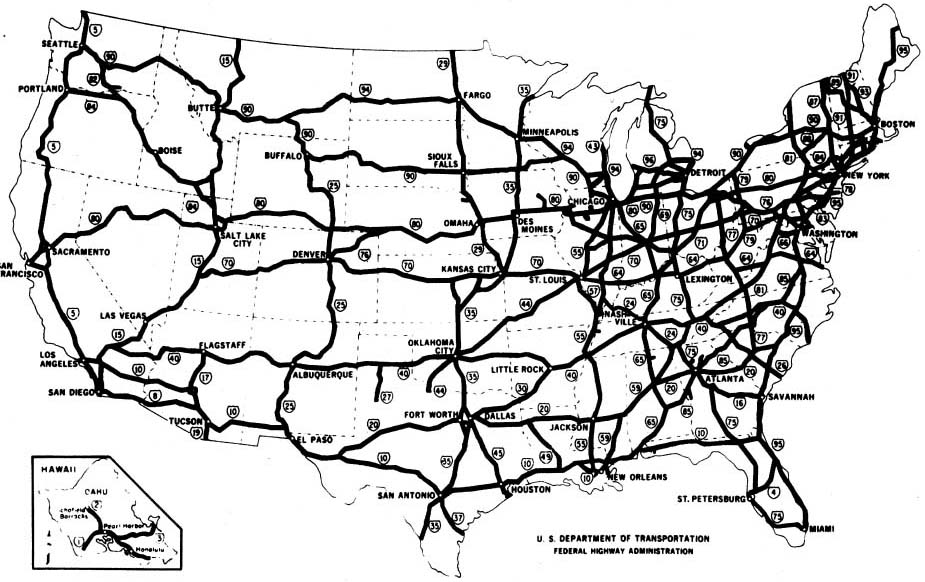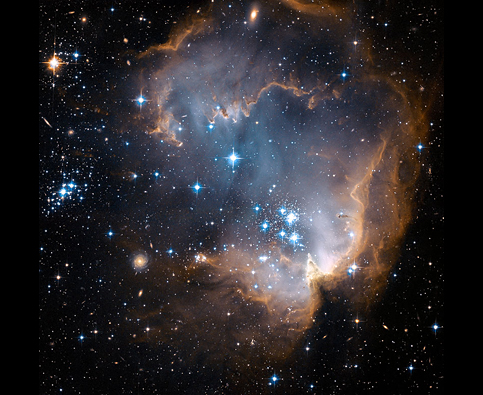I am sick of Democrats being defensive about our love for American government. We have the best government ever, and we have used it to do some truly amazing, wonderful things. And what's more, the people who "hate the government" are usually overlooking the many, many things the government does for them - and does very well.
Take this dude (not the President, the business owner), for example:
He's forgetting that he accepted over a million dollars in aid from both state and federal governments to help his company start and grow. Money that had nothing to do with his success? I doubt it.
Every time some self-involved, entitled person...
...claims that they did everything all by themselves it really puts my back up, because they are negating every person and every community who/which helped them along the way.
American life is interconnected. Yes, we are a diverse, large, spread-out country. But we are still connected to each other. And the more we focus on that fact, the better we do as a society. All of this talk about Red States versus Blue States, and Us-versus-Them within our country takes away from our ability to see the whole America.
My two-year-old is fond of saying "I want to do it all by myself." But as I and most other parents know, she tends to start doing the given task "all by herself" and then reach out a hand or ask for help. That's awesome. I want my kids to be independent. But I also want them to be able and willing to ask for help when they need it, and to know that good people will lend a hand to each other. I want them to help others, too, because that will make them better people. Good governments do that. Because what is government of the people and by the people but an expression of our collective will to do good for the people?
So in this vein, I present some my favorite things that American government has done. Note: This is by no means an all-inclusive list, just some highlights.
- Big things: These are enterprises of such breadth and scope, they needed the weight of the American government to get them done.
- The Eisenhower Highway System - "The Interstate System has been called the Greatest Public Works Project in History. From the day President Dwight D. Eisenhower signed the Federal-Aid Highway Act of 1956, the Interstate System has been a part of our culture—as construction projects, as transportation in our daily lives, and as an integral part of the American way of life. Every citizen has been touched by it, if not directly as motorists, then indirectly because every item we buy has been on the Interstate System at some point. President Eisenhower considered it one of the most important achievements of his two terms in office, and historians agree."
Watch Travel the Panama Canal on PBS. See more from American Experience.
- The Hoover Dam - "Building Hoover Dam required more than 5 million barrels of concrete. The finished dam contains enough concrete (4.5 million cubic yards) to build a two-lane highway from Seattle, Washington to Miami, Florida... At 726 feet (221 m) high–twice the height of the Statue of Liberty–and 1,244 feet (379 m) long, the dam weighs more than 6.6 million tons. At its base, where the maximum water pressure is 45,000 pounds per square foot, are huge generators that could produce up to 3 million horsepower and provide electricity for three states. The building of the dam created Lake Mead, which extends for 550 miles of shoreline and 247 miles of area, and is one of the largest man-made lakes in the world. Hoover Dam was the tallest dam in the world when it was finished, and remained the largest producer of hydroelectric power in the world until 1948."
- Everyday things: These are things we might take for granted, ways in which the government helps us everyday.
- The U.S. Mail - safe, efficient, constant.
- Libraries - These are mostly local, but they are a huge community benefit to public learning (and a great place for kids to go).
- Public Schools - This is basically the story of the American Dream. The provision and expansion of public schooling has meant that children are not solely defined and limited by their socio-economic, gender, racial, ethnic status at birth. That concept is more American than apple pie, and it was somewhat of an anomaly until we did it (but see Napoleon).
- The NOAA Weather Service - all weather warnings and most weather information that we use everyday.
- Law and Order
- Labor laws/OSHA - the creation of the weekend, outlawing child labor, creating and enforcing workplace safety standards.
- Food and Drug Inspection and Regulation
- Safety Regulation - "The CPSC's work to ensure the safety of consumer products - such as toys, cribs, power tools, cigarette lighters, and household chemicals - contributed significantly to the 30 percent decline in the rate of deaths and injuries associated with consumer products over the past 30 years."
- Environmental Regulation - In 2010 alone, the reductions in fine particle and ozone pollution from the 1990 Clean Air Act amendments prevented more than:
- 160,000 cases of premature mortality
- 130,000 heart attacks
- 13 million lost work days
- 1.7 million asthma attacks
- Roads, Bridges, Public Transit
- National Parks and State Parks - Here are a few of my favorite National Parks. Thank you, Teddy.
Acadia
Great Smoky Mountains
Arches
Everglades
- Things that probably would not be accomplished by private commerce alone: Yes, there are those who think that everything good is born of capitalism. But those people are wrong. Freedom did not come from capitalism. Democracy did not come from capitalism. And the following things would probably not have happened had they been left to private commerce alone.
- Universal Public Education - See "Public Schools" above...
- Title IX - It's not just about sports, it's about equal education for women. And boy did it work.
- In 1973, 43% of female high school graduates were enrolled in college. This grew to 72.3% in 2011.
- In 1971, 18% of young women and 26% of young men had completed four years or more of college; in 2011, 30.1% of women had earned bachelor's degrees, to 30.8% of men.
- In 1972, women received 9% of medical degrees but by 2011 that number had moved up to 48.4%; 1% of dental degrees grew to 45.3% in 2010; and the percentage of law degrees earned by women had moved from 7% in 1971 to 45.9% in 2010.
- The sports statistics are also impressive. Which leads some to ask... Are These the Title IX Olympics?
- Humans Going to the Moon/Hubble Space Telescope/Space Exploration -
- Rural Electrification - "When President Roosevelt created the REA, only 10 percent of rural Americans had electricity. This lack of power prevented farmers from modernizing their facilities. It also forced some people to live in unhealthful conditions. Many rural Americans, for example, lived in inadequately heated homes with poor sanitation. Most farmers had no running water and little means to store their food. Nevertheless, privately owned utility companies, which provided power to most of the country, were not eager to serve the rural population. These companies argued that supplying rural areas with electricity was not profitable. The lack of attention from private companies led farmers to form non-profit cooperatives to implement electrification even before the REA. But, without the government's assistance, these organizations lacked the technical and financial expertise they needed to succeed."
"The day the lights finally came on at our farm, I remember my mother cried," former Agriculture Secretary Bob Bergland recalled during the anniversary celebration. They were tears of joy, he said, because with the arrival of electricity on his parents' subsistence farm near the border of Minnesota and Canada, "she finally saw a chance for our family to break the bonds of poverty. "We lived in poverty, as did most of the other 6 million farms then operating in the United States," he said. "You struggled to stay alive."... Art Campbell, Deputy Under Secretary for Policy and Planning at USDA Rural Development... said, "REA is government at its best: doing things critical for the common welfare that are beyond the ability of individuals to do for themselves." [Emphasis mine.]
- The Tennessee Valley Authority - "The Tennessee Valley Authority is the nation's largest public power provider and a corporation of the U.S. government. TVA was established by Congress in 1933 to address a wide range of environmental, economic, and technological issues, including the delivery of low-cost electricity and the management of natural resources. TVA’s power service territory includes most of Tennessee and parts of Alabama, Georgia, Kentucky, Mississippi, North Carolina and Virginia, covering 80,000 square miles and serving more than 9 million people... TVA is now fully self-financing."
"Even by Depression standards, the Tennessee Valley was in sad shape in 1933. Much of the land had been farmed too hard for too long, eroding and depleting the soil. Crop yields had fallen along with farm incomes. The best timber had been cut. TVA built dams to harness the region’s rivers. The dams controlled floods, improved navigation and generated electricity. TVA developed fertilizers, taught farmers how to improve crop yields and helped replant forests, control forest fires, and improve habitat for wildlife and fish. The most dramatic change in Valley life came from the electricity generated by TVA dams. Electric lights and modern appliances made life easier and farms more productive. Electricity also drew industries into the region, providing desperately needed jobs... During World War II, the United States needed aluminum to build bombs and airplanes, and aluminum plants required electricity. To provide power for such critical war industries, TVA engaged in one of the largest hydropower construction programs ever undertaken in the United States. Early in 1942, when the effort reached its peak, 12 hydroelectric projects and a steam plant were under construction at the same time, and design and construction employment reached 28,000." [Emphasis mine.]
I could go on for a really long time... but I have these kids I like. Maybe another time we'll get to: Social Security, Medicare, the Military and the G.I. Bill, SCHIP, Good "Pork," and Public Television and Radio.
So is America having trouble right now? Yes. But we have encountered worse. Ask not what your country can do for you, but what you can do for your country. Please stop asking for tax cuts, and instead go buy some U.S. bonds, or buy some American-made products, or go help somebody you think is *truly* worthy of helping to run our country win an election.















Just thinking about this collective action that has helped so many people gives me the warm fuzzies, as it did when I first learned about it in middle school. Why don't other people get that feeling? Insufficient oxytocin?
ReplyDeleteThanks, I totally agree. I could look at Hubble pictures, for example, all day. And I love that our country has put so much effort into helping people achieve. :-)
ReplyDelete